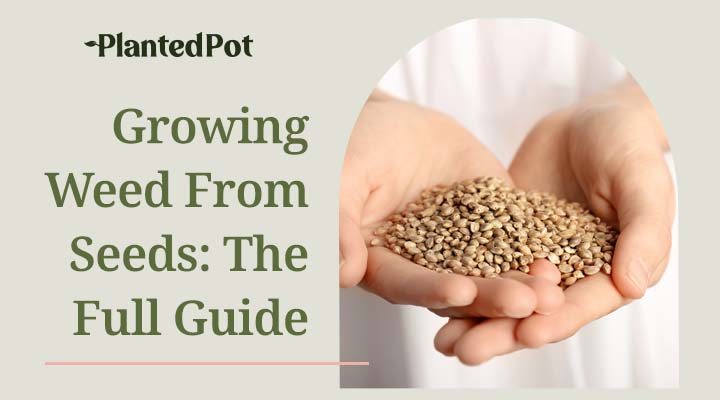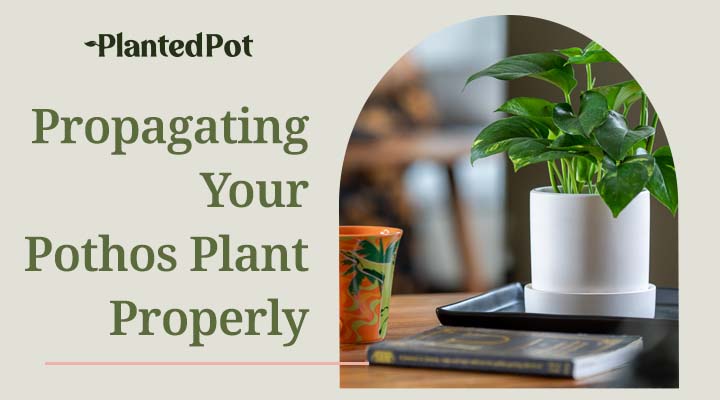
Spider Plant Brown Tips [Causes & Solutions for This Common Issue]
Home / Spider Plant Brown Tips [Causes & Solutions for This Common Issue]
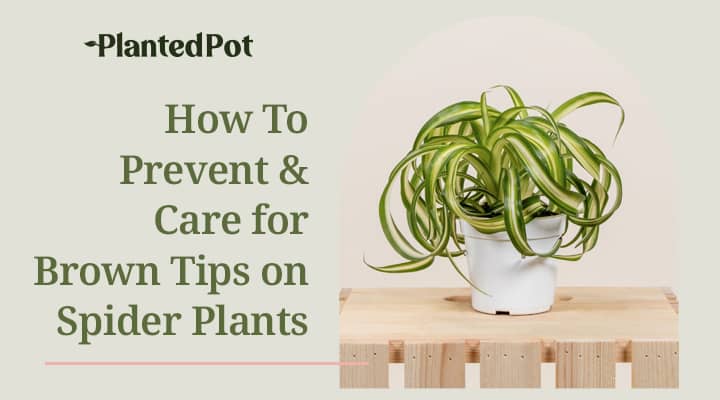
Spider Plant Brown Tips [Causes & Solutions for This Common Issue]
- Olivia Richman
- February 14, 2022
- 10:03 am
- No Comments
Spider Plants are one of the easiest plants to own, making them perfect for every level of gardener. Unlike most plants with similar looks and origins, the Spider Plant doesn’t require a lot of water or sun. But that doesn’t mean you can completely abandon Spider Plants. Brown tips can signify that something is wrong with your Spider Plant.
While it can be concerning to see Spider Plant leaves becoming brown, it’s luckily very easy to fix your plant with just a little care, bringing it back to full health almost instantly. But you’ll first have to find out exactly what is causing your Spider Plant leaves to develop brown tips.
How To Identify The Early Stages of Browning Tips on Spider Plants
Spider Plants are known for their durability, but they aren’t completely indestructible. While they don’t need as much consistent light and water as other houseplants, the Spider Plant still won’t look its best if it’s not getting the right care. You may start seeing brown leaf tips when your Spider Plant is trying to tell you something is wrong.
Sometimes it can be hard to spot the early stages of brown tips, but there are some things to keep an eye out for before the leaf dies:
- Curling and wrinkling of the leaves
- Wilting
- Dry, crumbly leaf tips
- Pests
- Dusty, dry soil
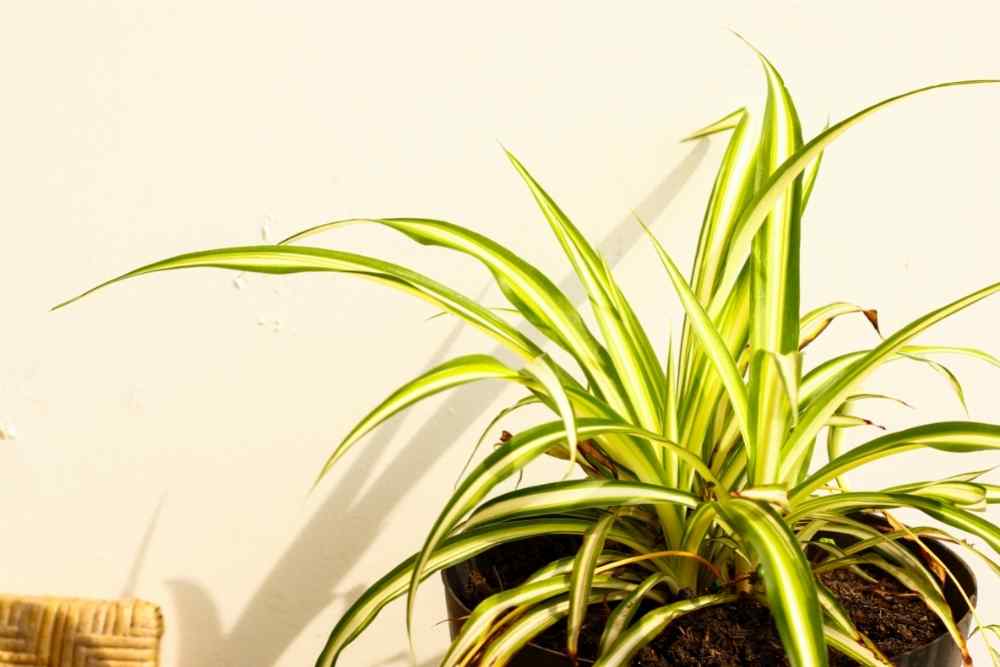
Identifying Diseases
Disease is one of the most common reasons your Spider Plant turns brown. Here are some of the most common diseases and how they look on your Spider Plant:
- Bacterial leaf blight: Leaf tips gradually turn brown after starting as light lesions.
- Bacterial leaf spot: Yellowing in the leaf margin, edges turn brown.
- Fungal leaf rot: Tiny brown spots on the leaf due to a warm, wet environment.
- Root rot: Below the soil, roots turn black.
Common Reasons For Brown Tips
Spider Plants are hardy houseplants that are great for beginning gardeners. But you still need to provide Spider Plants with proper care to avoid brown leaf tips. Here are some of the most common reasons a Spider Plant will get brown tips.
Wrong Amount of Water
Too much water and too little water will both lead to brown leaf tips. Giving a plant too much or not consistently enough water can lead to something called “water stress.”
When you give your Spider Plant too much water, it can lead to root rot. Root rot stops nutrients from reaching the rest of the plant, leading to brown leaf tips. Over time, it leads to death. It’s safe to say the Spider Plant doesn’t like sitting in moist soil.
Under-watering will dry your Spider Plant out eventually. A lack of moisture will also cause Spider Plant leaves to get brown tips.
Fluoride
It’s not just the amount of water but what’s inside of it. Fluoride can be toxic to Spider Plants, leading to brown leaf tips. Fluoride will build up, disrupting your plant’s photosynthesis process. This will eventually create brown tips on your Spider Plant’s leaves.
Too Much Fertilizer
Too much fertilizer will lead to a salt buildup. This toxicity will damage your plant’s roots, turning your Spider Plant’s leaves to develop brown tips. This is a slow-growing plant that doesn’t need extensive fertilizer, especially during colder months.
How to Know if Your Spider Plant is Over-Fertilized
If your Spider Plant is getting too much fertilizer, you’ll see white spots on the top layer of the soil. This means there is a salt buildup. You can also look at the tray underneath the pot. If there are a lot of white stains on the tray, that’s another sign of too much salt.
Too Much Sun
Spider Plants like spots in your home or garden that are a bit shadier. Direct sunlight can dry the soil and burn their leaves. Burnt leaves will often have brown spots and brown tips.
Low Humidity
To properly thrive, Spider Plants prefer high humidity levels. Without the right amount of humidity, this plant will start to dry out. When the Spider Plant is dried out, you’ll notice that the Spider Plant leaves are brown.
How To Fix and Stop Browning
Notice your Spider Plant leaves turning brown? If you see brown tips on your Spider Plant, there are some things you can do to improve their environment almost instantly. Here is what you should do to immediately help your Spider Plant recover.
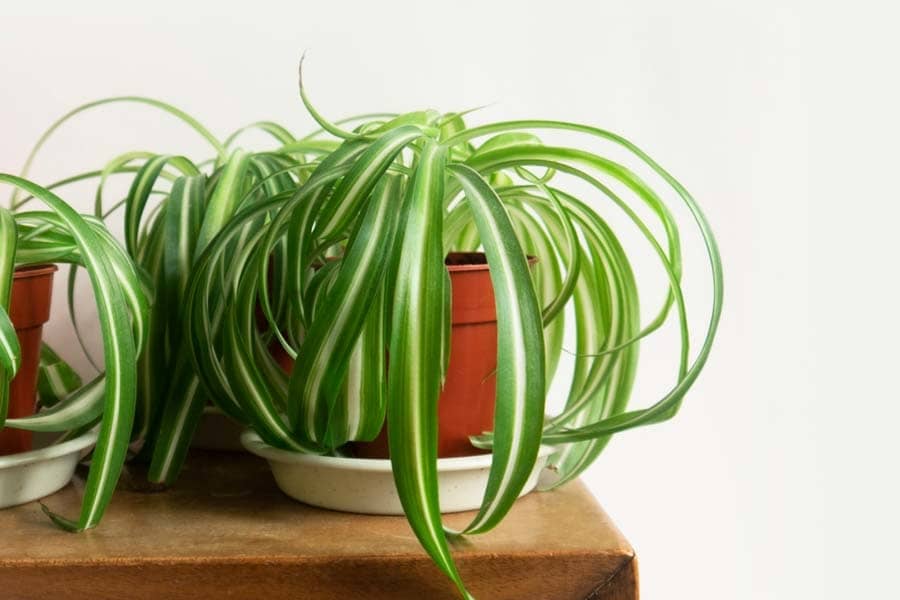
Consistent Watering
If you aren’t consistently watering your Spider Plant, this could mean too much or too little water in the soil. Come up with a schedule for watering to avoid stressing out your plant.
But how much water is right for the Spider Plant? Put your index finger into the soil. Only water your plant if the first two inches are dry.
How to Soak-Water Your Spider Plant
If your Spider Plant’s soil completely dried out, you’ll want to soak-water your plant right away. This will give them much-needed water and nutrients, refreshing your plant almost right away. Here’s how to do it:
- Place your Spider Plant in the sink without a saucer.
- Fill the sink with about three to four inches of water.
- Allow your plant to soak up the water through the pot’s drainage holes for about 45 minutes.
- Feel the top of the soil to see if the water reached the first few inches.
- Water your Spider Plant from the top if the soil is not fully saturated.
- Drain your sink and let your plant drain fully while in the sink.
- Place your Spider Plant back on the saucer in its usual spot in the house.
Repot Your Plant
If you were previously over-watering your Spider Plant, consider giving your plant a fresh start in a new pot. The pot should have a good drainage system. Add a well-draining soil that has high calcium levels.
Change the Water
Make sure that the water you’re using is not harmful to your Spider Plant. Avoid tap water if possible. It often has too much fluoride. You can even use rainwater. Using the right kind of water will immediately start to refresh your Spider Plant.
Move Them Out of the Sun
If you suspect that the sun damaged your Spider Plant leaves by the sun, find a new spot in your home that isn’t in direct sunlight all day long. Indirect sunlight is usually the best for Spider Plants, protecting them from harmful rays.
Increase Humidity Levels
Some plants, including Spider Plants, prefer higher humidity levels than the usual level in our homes. Here are some ways you can increase humidity for your Spider Plant, helping them to immediately feel less dried out:
- Put them in a more humid room, like the bathroom or kitchen.
- Mist your Spider Plant to create a more humid atmosphere.
- Put them in a room with a humidifier.
- Place a tray full of water under the pot that has pebbles to keep the pot above the water level.
Should I Cut the Brown Tips Off My Spider Plants?
Cutting the brown tips off damaged Spider Plant leaves is unnecessary but can be done if desired. Brown tips won’t harm or damage your plant since they are just dead tissue. In most cases, they will dry off on their own.
However, keep in mind that if your plant has a disease, it will continue to spread. If it’s affecting your plant’s stems, the plant is going to die. It’s unfortunately too late, and you’ll need to dispose of your plant.
If you choose to cut off the brown tips, make sure you do so carefully. You don’t want to cut into too much healthy leaf tissue. This can put Spider Plants into shock.
How To Prevent Spider Plant Tips From Browning
Worried about your Spider Plant’s leaf tips turning brown again? Luckily, there are some things you can do to ensure your plant stays healthy and doesn’t start turning brown once more.
- Empty the saucer under your plant’s pot after watering sessions, or else the soil may absorb the moisture.
- Flush out your plant’s soil with distilled water regularly, allowing it to completely drain out.
- Stop fertilizing your plant and flush the soil with water to remove excess salt buildup.
- Keep the watering schedule regular and consistent.
- Don’t let your Spider Plant get too much sun exposure.
- Always check on humidity levels.
Final Thoughts – Spider Plant Brown Tips
The Spider Plant is a stunning houseplant known for its springy and vibrant leaves. They are usually light green and striking white, a glorious contrast that makes the Spider Plant perfect for every room and garden. But it can be quite troubling when the leaves start to turn brown. Spider Plants with brown leaf tips are trying to tell you something is wrong. This usually means not enough water, too little water, too much salt in the water, extreme sun exposure, or a lack of humidity.
Once you figure out what’s causing your Spider Plant to struggle, there is luckily an abundance of easy fixes to have your Spider Plant vibrant and stunning in a matter of days. A consistent water schedule, indirect sunlight, a well-draining pot, and increased humidity will almost instantly make your Spider Plant glorious and eye-catching once again.


